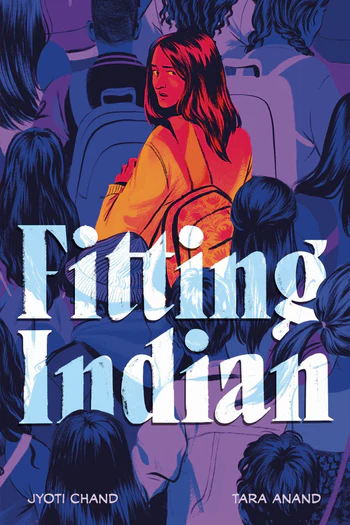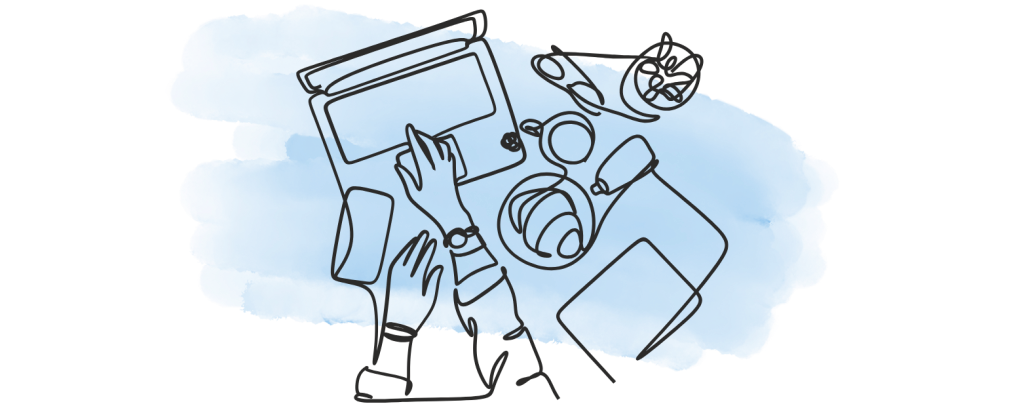
“While Nitasha’s story may come off strong to some readers, I deeply appreciated the (often self-evident) risks that Jyoti Chand took in telling it.”
Not to shine a giant spotlight on the great title right away, but Nitasha’s main goal in Fitting Indian (out May 13, 2025) is, well, to fit in. Many of her high school relationships are broadly relatable, between her longtime best friend that she’s jealous of for always having a boyfriend, and her crush, a guy she’s hoping asks her to the homecoming dance.
She’s also Indian, and while this is important to her, she often feels stifled by her family. Her parents want her to grow up to be a good wife, and her brother is the golden child: a doctor engaged to an Indian woman. Everything Nitasha does gets thrown back at her, whether she’s trying to be like everyone else or trying to be herself. This causes a great deal of inner turmoil, leading Nitasha to often drink to excess and self-harm (both of which are illustrated in detail).
As Nitasha struggles to balance being the girl she hopes her crush likes and the girl her family desires her to be, a series of poor decisions and a very public betrayal lead to massive consequences. Everyone in her life has an opinion about what happened, and she’s not sure she can handle being alive anymore.
This story says a lot of smart things about mental health and mental wellness in general, but filtering them through the lens of Nitasha’s Indian family and friends offered important cultural insight into Nitasha’s journey. And while Fitting Indian‘s resolution reflects more the ideal outcome for all parties than the “realistic” outcome, I still found it an important scene to set for anyone who hopes for more awareness and knowledge around mental health and mental illness. (Also, for anyone looking to support someone who’s struggling with their mental health!)
At times, I was confused by the order of the speech bubbles, and whether a sudden color change indicated a shift in tone, a flashback, or something else. But taken as a whole, the story was easy to follow and Tara Anand’s illustrations are beautiful.
As someone with their own mental illness background, I was grateful that self-harm in particular — not to mention the desire to not be alive anymore — was discussed in the detail it was. Waving away these very real thoughts and experiences can perpetuate the stigma that mental illness and its internal and external manifestations are too difficult, too graphic to talk about. While Nitasha’s story may come off strong to some readers — not that it isn’t a powerful story, but with regards to the aforementioned discomfort when it comes to talking about mental health — I deeply appreciated the (often self-evident) risks that Jyoti Chand took in telling it.
Thanks to HarperCollins and NetGalley for the ARC.

Leave a Reply